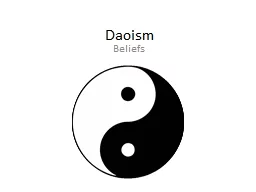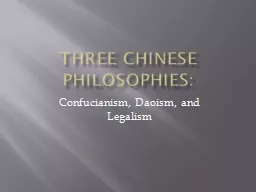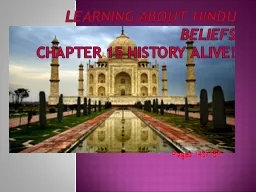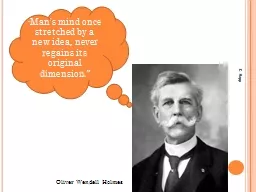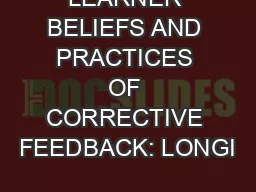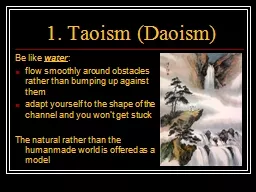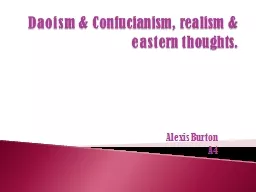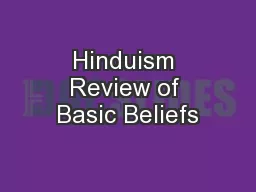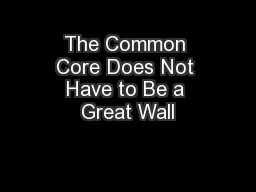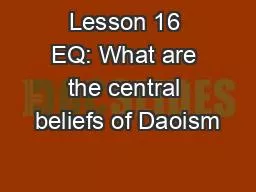PPT-Daoism Beliefs Background
Author : sherrill-nordquist | Published Date : 2018-10-06
One of two indigenous Chinese religions Dates back to Ancient China at least 1751 BCE some parts very similar to ancient Western religion Only found in China and
Presentation Embed Code
Download Presentation
Download Presentation The PPT/PDF document "Daoism Beliefs Background" is the property of its rightful owner. Permission is granted to download and print the materials on this website for personal, non-commercial use only, and to display it on your personal computer provided you do not modify the materials and that you retain all copyright notices contained in the materials. By downloading content from our website, you accept the terms of this agreement.
Daoism Beliefs Background: Transcript
Download Rules Of Document
"Daoism Beliefs Background"The content belongs to its owner. You may download and print it for personal use, without modification, and keep all copyright notices. By downloading, you agree to these terms.
Related Documents

